#Celia Fremlin
Explore tagged Tumblr posts
Photo

Celia Fremlin (pseudonym of Celia Margaret Goller) - Don't Go To Sleep In The Dark: Short Stories - J.B. Lippincott Company - 1970
#witches#darksleepers#occult#vintage#don't go to sleep in the dark#stories#celia fremlin#celia margaret goller#j.b. lippincott#1970#13 short stories
148 notes
·
View notes
Text
Winding Up the Week #404
An end of week recap “One can never have enough socks. Another Christmas has come and gone and I didn’t get a single pair. People will insist on giving me books.” – J.K Rowling (Harry Potter and the Philosopher’s Stone) I hope those of you who celebrate Christmas or Hanukkah have a wonderful time over the festive period. I wish you peace, pleasure and a great many presents in the form of books. I…
#japaneselitchallenge18#British Library Crime Classics#Celia Fremlin#Christmas Books#David Brooks#Elizabeth Anthony#Eugen Bacon#Harry Potter#J.K Rowling#Japanese Literature Challenge 18#JJ Lee#Liane Moriarty#Pandora Sykes#Sarah Clegg
0 notes
Text
my year in reading | 2020
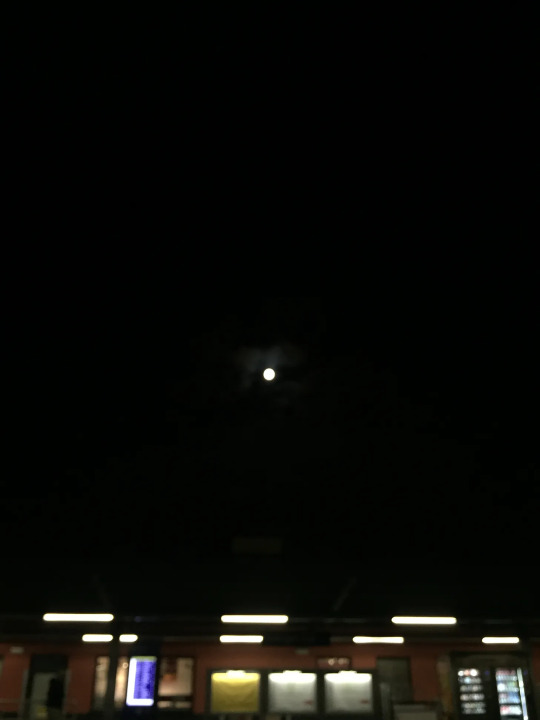
Marking the passing of the years has a mystical and at the same time mundane quality to me. But time is passing and to reflect upon this linearity we all are bound to does always seem more magical than anything. So, as every year, I am embracing the turning of the years and look forward to a fresh start.
The end of an old year and the beginning of a new one is always an exciting time for someone as keen on semiotics and symbolism as I am. A thin membrane, much as on Halloween, that allows us to pass through to new endeavours, if we wish to see it that way.
And I do. I don’t scoff at New Year’s Resolutions and while I know that one can resolve to change and integrate new habits at any time of the year, any Tuesday in March or Saturday in June, this brief liminal space between two years is a magical one. Anything we ascribe value to automatically becomes valuable, as it is with birthdays, full moons or anniversaries of any kind.
I would rather be someone to see the magic in these things and give them meaning beyond that which is considered “real”, “plausible”, or “rational”, than turn away and let a moment that could be something special slip away unnoticed, without giving it the chance to attach itself to something.
January began atop the Himalayan mountains for me this year, freezing down to the bone in a tent. I did carry a book with me on this trip - The Snow Leopard, quite fittingly - though I did not turn one single page (difficult in 3 pairs of gloves) and have not finished it since. So, as has been my custom these past years, I began 2020 with The Secret History, a book that could never disappoint, unlike The Starless Sea by Erin Morgenstern, that I had eagerly awaited for more than a year. You win and you lose sometimes.
In February I succumbed to reading two quite popular crime novels - The Woman in the Window and The Girl on the Train - the latter of which was a gift from an Indian friend. Sadly, I wasn’t overly excited about either of them - maybe I have outgrown crime fiction for now? I also read and loved, as always, the fifth book in Seanan McGuire’s Wayward Children series - Come Tumbling Down.
My reading month was otherwise also filled with classics such as Animal Farm, The Turn of the Screw and In Cold Blood (I have apparently not lost any interest in true crime fiction), and I also watched the Greta Gerwig adaptation of Little Women twice at the cinema. But February also saw me returning to Germany, leaving my time in India behind, prompting me to read Vivek Shanbagh’s Ghachar Ghochar and Amitav’s Ghosh Gun Island immediately upon my return.
Gun Island especially was a magical book, in some ways reminiscent of A.S. Byatt’s Possession and I absolutely adored it. I listened to Ann Patchett’s The Dutch House while sorting through all my belongings, freshly picked up from Mainz, and I quite enjoyed it. The story itself maybe not so much as the impression left behind by the tangible aliveness of the house itself. With Faber and Faber, finally, I got a sneak preview of the rather unknown Celia Fremlin and her Ghostly Stories, of which I definitely need to read more.
March was the month that would dictate the beginning of the rest of the year, when the first lockdown came upon us. R came back from India, and we managed to see each other before boarders closed. And my cousin A came to stay with us for two weeks from Milan - which would turn into almost 3 months.
Most of the month I spent ploughing through Why We Sleep by Matthew Walker, a truly eye-opening exploration and a gloriously interesting study. Luckily my sleep patterns are already quite healthy but I feel like this book could turn some people’s minds around. I also read Jane Austen’s Emma (amazingly fun and vibrant!) and continued my slow but steady reading of Agatha Christie’s collection with 4:50 from Paddington.
“April is the cruellest month,” as T. S. Eliot teaches us, and fittingly, I read the horrifying A Little Life by Hanya Yanagihara, a touching but troublesome book that had me cry a little on the balcony. I also finished three more Agatha Christie novels and started a virtual bookclub with J and C for which I read Dear Mr. M by Herman Koch and Les Fiancés de l’Hiver by Claire Dabos, which I truly loved.
In May I began tutoring, visited R in Leuven and read two disappointments: The Wych Elm by Tana French and The Bass Rock by Evie Wyld.
Even another true crime read in June, His Bloody Project, did not convince me, whereas Anita Brookner’s Look At Me sparked memories of Shirley Jackson and was thoroughly enjoyed. I listened to Frederik Bakman’s Bear Town and Us Against You at breathtaking speed, while embroidering a sweater - my best handiwork project yet. I also finished A.S. Byatt’s beautiful The Children’s Book - a magical tale, and stunningly written. A left me in June, and I missed her companionship dearly.
I worked a lot in July, and finally visited C and J ! Embroidering and just simply seeing each other again. I finished Gillespie and I, which turned out to be different to what I imagined - delightful ! I was disappointed in July by The Essex Serpent, reread A Little Princess, Die Unendliche Geschichte and Digital Minimalism.
I continued with my reading of Austen with Sense and Sensibility and listened to the wonderful The Fellowship of the Ring, which made work hours so much sweeter. Finally, I finished off the month with the final Austen - Mansfield Park, which I loved.
In August, the month of my birth, I finished The Lord of the Rings trilogy once more as well as Mythos by Stephen Fry. But more importantly, August called for freedom from working, finding an apartment in Maastricht and seeing H and J in Berlin to celebrate my birthday - with books of course.
September was a quiet reading month, what with settling in the house, at uni and making new friends. I got a sewing machine, went to Munich for an India reunion and revelled in the beautiful autumn days in the city.
I still read Bunny, The House Without Windows and Hex, amongst various reads for uni. Dinners on the balcony and an exorbitant amount of Federweißer with my roommates rounded off the month, despite the low book count.
The month of Halloween, October, called for a sixth reread of The Secret History, a New Zealand read of The Rehearsal, as well as Rest and be Thankful (disappointing somehow) and The Supper Club (surprisingly delightful). I sewed and knitted and did presentations and wrote paper proposals. I also fell up the stairs and hurt my ankle pretty badly.
The most vivid memory I have of November is that of our silent dinner. I also read two more Agatha Christies, reread Daphne DuMaurier’s classic Rebecca and Ali Smith’s Artful, and loved Public Library, also by Smith. I got tested for Corona (negatively!), began Ashtanga yoga and finished Crossing the Water - a brilliant poetry collection of Sylvia Plath.
December began with a classic, Bonjour Tristesse, and culminated with My Best Friend’s Exorcism, as well as The Stranger Beside Me. Both books I had been meaning to read for years and they exceeded my expectations. Uni stressed me slightly, pending holidays as well and as lockdown 2.0 was announced my reading brain switched itself off.
Christmas was still a joy, with the family (minus Oma) coming together, R. visiting briefly and many a book under the Christmas tree. I started reading Susan Sontag’s journals - but I will carry their brilliance into the New Year. I finished off the year sewing costumes for our medieval-plague themed NYE, J and me celebrating together, since Covid plagued us once more and prevented C from coming. But we will enter the New Year singing Total Eclipse of the Heart as always and I take with me all the positive energy I have been carrying with me for a while now.
This is also the first year that I won’t achieve my reading goal - which I set at 80 books for 2020. Instead I am finishing with a still solid 67. Overall, despite all that has been going on in the world, I cannot complain about my 2020. But let’s still hope for the best (and prepare for the worst).

1 note
·
View note
Text
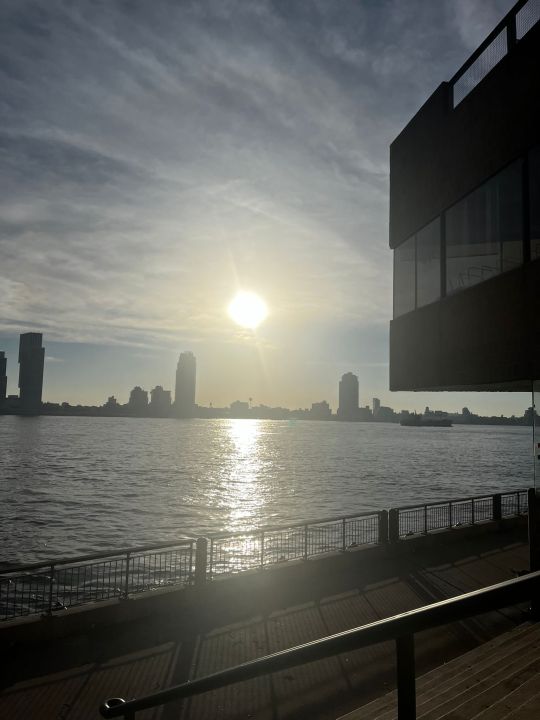
…
20/11/23 - BONNIE GARMUS (AND A.S. BYATT)
' ... the air heavy with November.' (Garmus, 2022, p.135).
REFERENCE
Garmus, B. (2022) 'Lessons in chemistry'. London: Doubleday.
*****
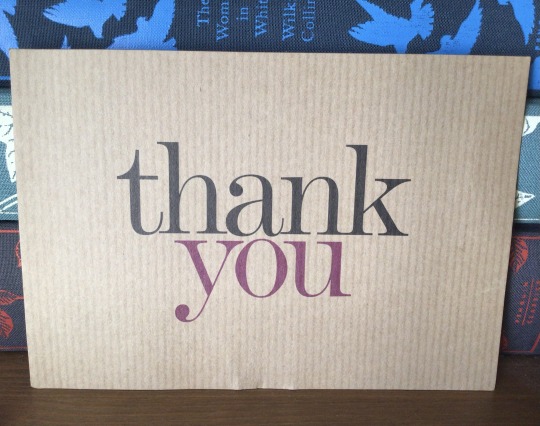
…
TO OUR NEW YORK CORRESPONDENT FOR THE LOCATION SHOTS
FROM
THE EAST RIVER PATH
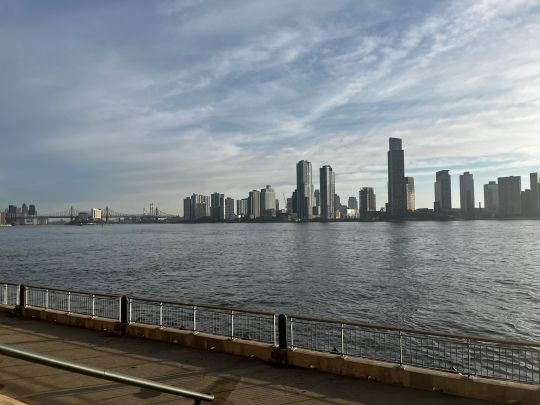
…
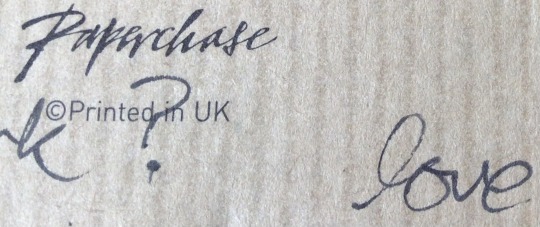
…
AND THANKS AGAIN
FROM OUR CORRESPONDENT
XXXX
SEE ALSO
' "It's about Thanksgiving." ' (Garmus, 2022, p.33).
‘What Americans call the "Holiday Season" generally begins with Thanksgiving … The first day after Thanksgiving Day—Black Friday—marks the start of the Christmas shopping season.’ (‘Thanksgiving’, 2023).
REFERENCE
‘Thanksgiving’ (2023) Wikipedia. Available at: https://en.wikipedia.org/wiki/Thanksgiving (Accessed: 20 November 2023).
STARTING EARLY IN BASINGSTOKE ON FESTIVE FRIDAY
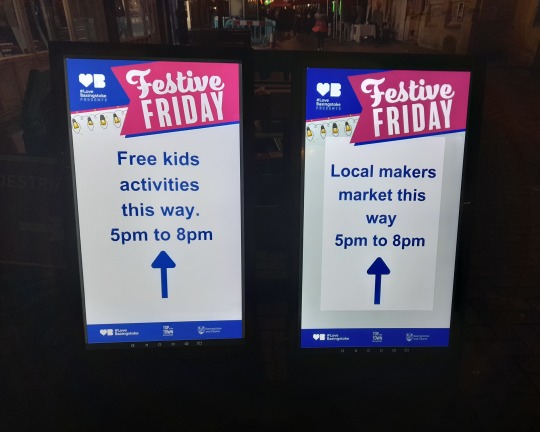
…
ON 17th NOVEMBER
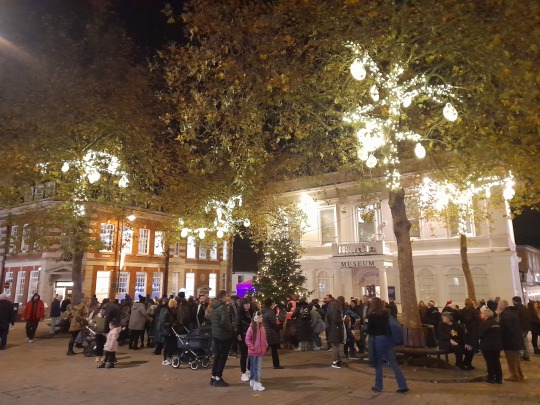
…
6 DAYS BEFORE THANKSGIVING AND 38 DAYS BEFORE CHRISTMAS
HAPPY THANKSGIVING 2023
*****
THANKSGIVING
*****
AKA FRIENDSGIVING
‘ … for people who could not or did not want to go home for the holiday.’ (‘Friendsgiving (meal)’, 2023).
REFERENCE
‘Friendsgiving (meal)’ (2023) Wikipedia. Available at: https://en.wikipedia.org/wiki/Friendsgiving_(meal) (Accessed: 20 November 2023).
AND NOW ONLY 35 DAYS TO FRIENDSMAS
*****
RIP 23

…
A.S. BYATT DIED 16/11/23
OBITUARY
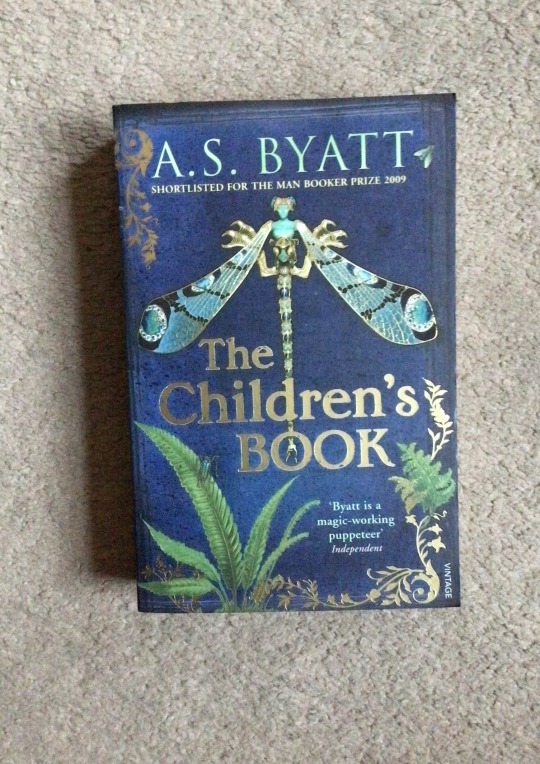
…
RIP
*****
PLUS
‘ ... while musical prodigies are always celebrated, early readers aren't. And that's because early readers are only good at something others will eventually be good at, too. So being first isn't special - it's just annoying.' (Garmus, 2022, pp.1-2).
FOR BOOK GROUP
THIS MONTH OUR MOST ANNOYING MEMBER
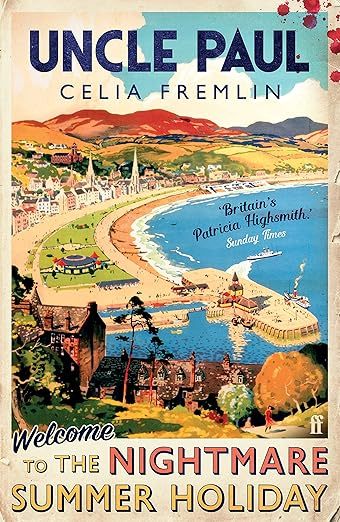
…
UNCLE PAUL
‘I have finished “Uncle Paul” by Celia Fremlin. Quite enjoyable.’
&
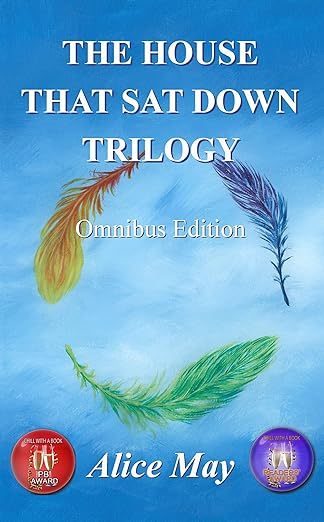
…
THE HOUSE THAT SAT DOWN
‘I have re-read “The House that Sat Down” by Alice May about a cob cottage that split apart. A true story of a cottage not too far from here and the consequences for the family. A brilliantly told story of a family’s very difficult time. Loved it just as much the second time around.’
…
OUR NEXT MOST ANNOYING READER LEADER
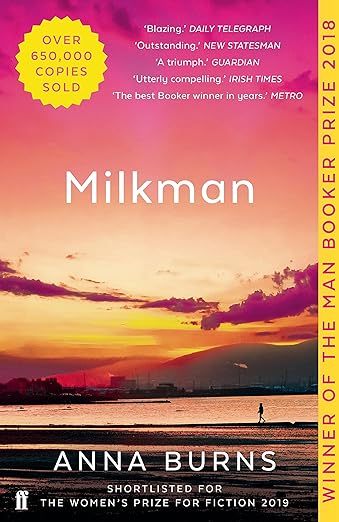
…
MILKMAN
‘I’m still reading Milkman, though do tend to fall asleep after a few pages. But I’m getting on - only 111 pages left. It is a remarkable book, and I can now see the humour the critics flagged up in the comments on the cover. It is certainly challenging, however!’
&
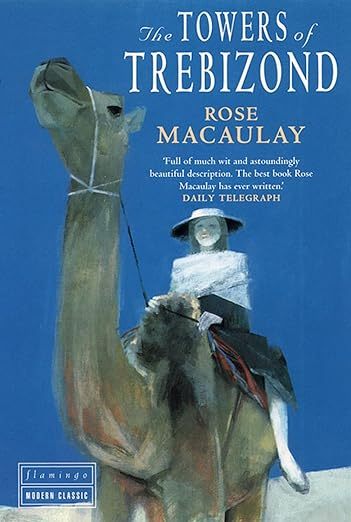
…
THE TOWERS OF TREBIZOND
‘As well as Lessons in Chemistry, I am also continuing to read The Towers of Trebizond. I read this in bed, so fall asleep reading this book too - but more legitimately. I won’t say anything. about it, as it is on our list for next year; only that is a favourite book of mine and is an easy read.’
&
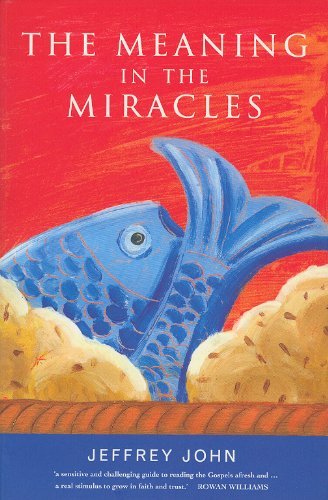
…
THE MEANING IN THE MIRACLES
‘I have put All the Light You Cannot See on hold as I can’t read more than three fiction books at the same time, but have started reading The Meaning in the Miracles by Jeffrey John which gives a new slant on the miracles attributed to Jesus.’
…
OUR NOT SO ANNOYING MEMBERS
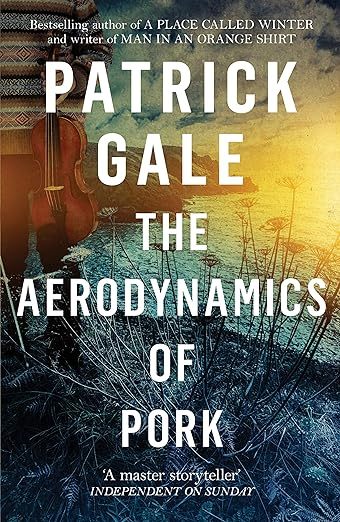
…
THE AERODYNAMICS OF PORK
‘I finished the Patrick Gale …………? Pork.’
&
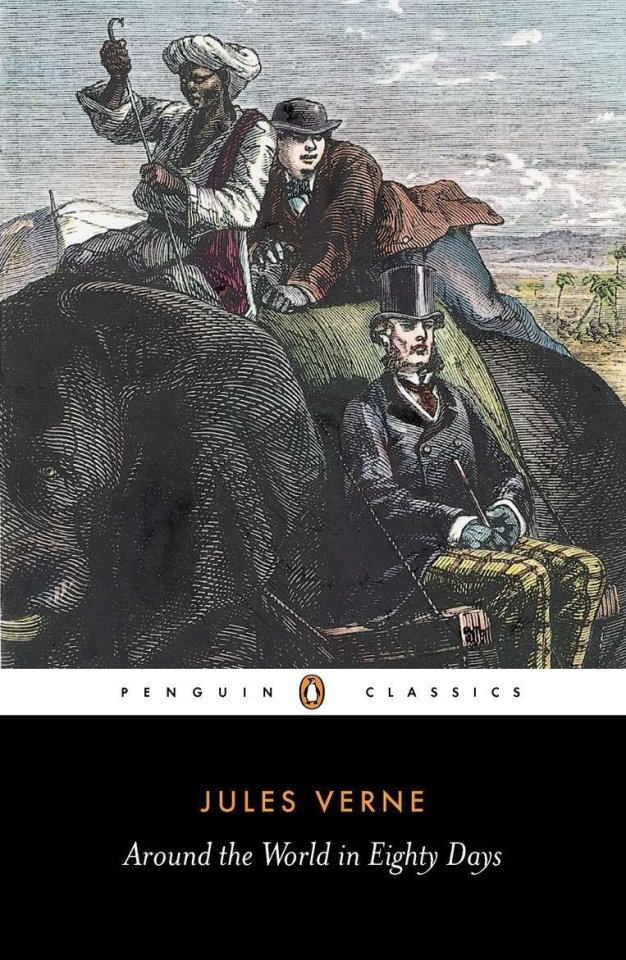
…
AROUND THE WORLD IN EIGHTY DAYS
‘ … am onto the Jules Verne now.’
WHILST THE OTHER HALF
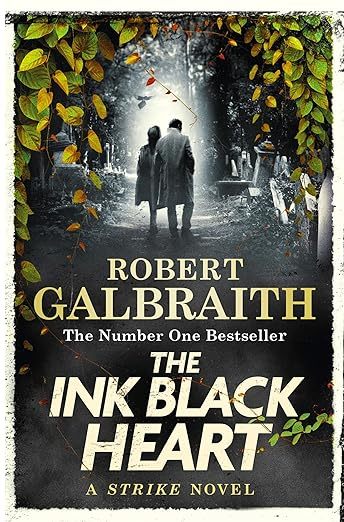
…
THE INK BLACK HEART
‘ … has finished the Galbraith and is onto Agent Zizag by Ben McIntrye, which I read a few months ago.’
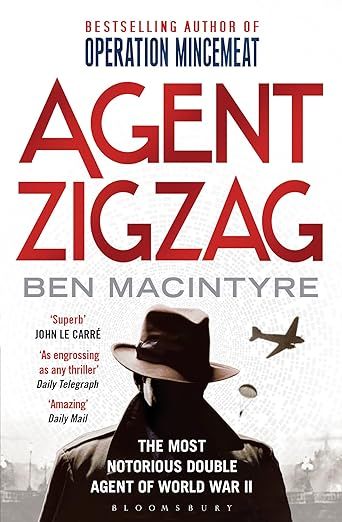
…
AGENT ZIGZAG
…
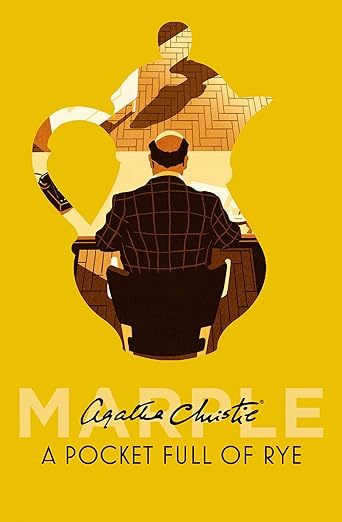
…
A POCKET FULL OF RYE
‘This year I bought a Miss Marple calendar and discovered that there are twelve Miss Marple books. I have been reading one a month.’
…
OUR LEAST ANNOYING MEMBER
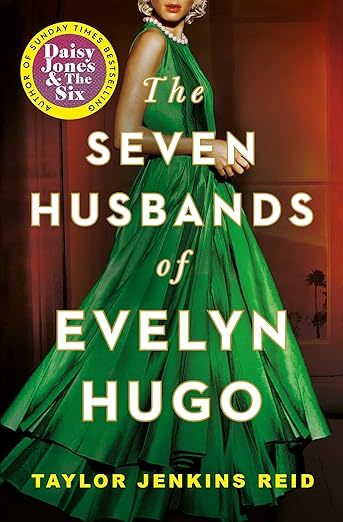
…
THE SEVEN HUSBANDS OF EVELYN HUGO
'I’ve just read The Seven Husbands of Evelyn Hugo by Taylor Jenkins Reid. I enjoyed it but it is quite complex on several different levels. It has been quoted as being based on the fact that Elizabeth Taylor married several times, but the basic thread is that the heroine is gay, so that several of her marriages were to gay men so that both partners in these marriages could have secret gay relationships. There were other threads, the heroine becomes an acclaimed film star and there is quite a lot about the film world.’
…
AND OUR NOT AT ALL ANNOYING MEMBER
‘No other reading from me this month I am afraid. At least nothing worthy of note.’
*****
BOOK GROUP
*****
QUOTE OF THE WEEK 2011 - 2023
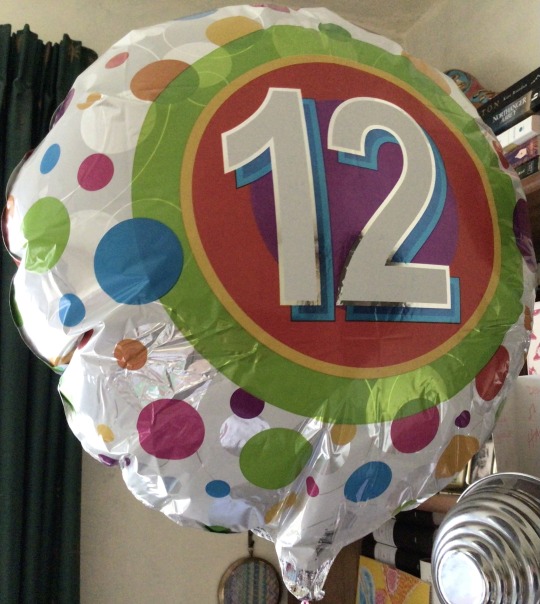
…
12 EPIC YEARS
FROM THE ARCHIVE
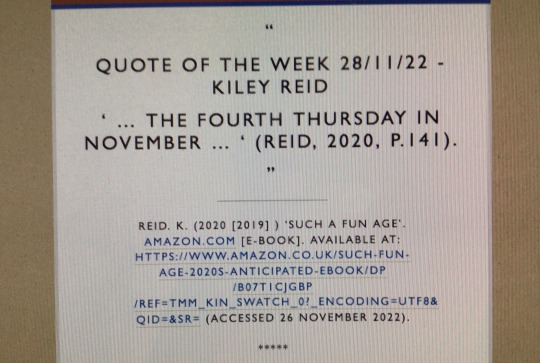
…
28/11/22
*****
0 notes
Text
The Hours Before Dawn
‘I’d give anything — anything — for a night’s sleep.’
It was for a man’s Fairisle pullover, with a wonderful, intricate pattern, in the finest of fine wool.
— Celia Fremlin
1 note
·
View note
Photo

Uncle Paul, by Celia Fremlin (Four Square, 1964)
From eBay.
23 notes
·
View notes
Text
Faber Stories - the Women! #djunabarnes #celiafremlin #mariannemoore @faberbooks
Faber Stories – the Women! #djunabarnes #celiafremlin #mariannemoore @faberbooks

Following on from my last post, about an entertaining pair of slim volumes in the Faber Stories series, today on the Ramblings I’ll be considering a trio of offerings from some very different women authors. Two are names I’ve read before; one is a writer I’m very keen to explore further; all are very thought-provoking!
The Lydia Steptoe Stories by Djuna Barnes
Barnes is a celebrated modernist…
View On WordPress
0 notes
Photo

Thursday again, back at it with another drawing!
This is my small contribution to the time-honored tradition of drawing skeletons just relaxing and enjoying (after)life one day at a time.
[Image description: illustration of a bespectacled skeleton seated at a desk on an old library checkout card bearing circulation details for Celia Fremlin’s “Lovely Day to Die and Other Stories.” The skeleton is reading a book and holding a coffee mug bearing the slogan “Live, Laugh, Love.” End description.]
12 notes
·
View notes
Text
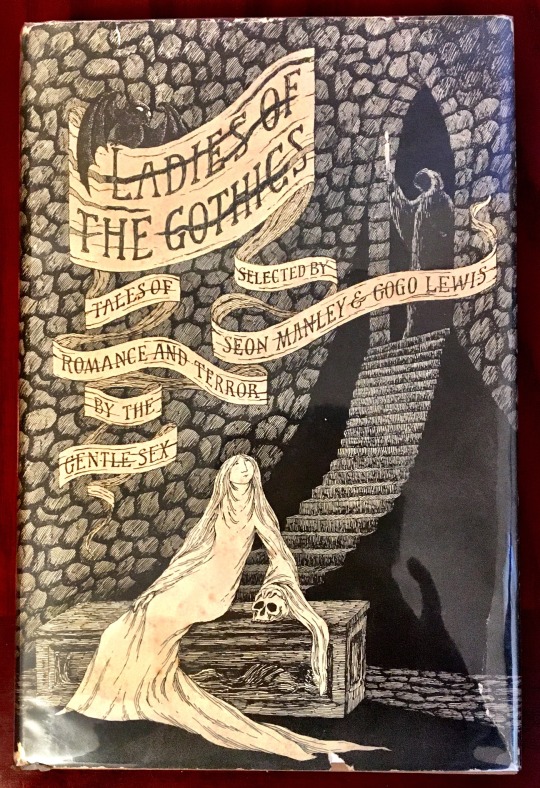
Book 193
Ladies of the Gothics: Tales of Romance and Terror by the Gentle Sex
Seon Manley & Gogo Lewis, eds.
Lothrop, Lee & Shepard Co. 1975
There are several of these anthologies edited by Seon Manley and her sister, Gogo Lewis, with covers by Gorey, but this is the only one I have. One of these days, I’ll probably run into some of the others. This one features Celia Fremlin, Ruth Rendell, Mary Wilkins Freeman, Elizabeth Madox Roberts, Emily Brontë, Ann Radcliffe, Jane Austen, Mary Shelley, Harriet Prescott Spofford, and Isak Dinesen.
#bookshelf#illustrated book#library#collection#personal library#personal collection#books#book lover#bibliophile#booklr#ladies of the gothics#Seon Manley#Gogo Lewis#edward gorey#lothrop lee & shepard#literature#fiction
5 notes
·
View notes
Photo

The Jealous one by Celia Fremlin - vintage paperback cover, 1965
#vintage paperbacks#paperback cover#pocket#book cover#vintage book cover#vintage book#vintage illustration#Illustration
18 notes
·
View notes
Text
Revisiting A Suspense Classic: Review of "The Jealous One" By Celia Fremlin
Revisiting A Suspense Classic: Review of “The Jealous One” By Celia Fremlin
Reviewer Tom Andes takes a closer look at the newly published reprint of the suspense classic novel “The Jealous One” By Celia Fremlin.
It’s hard to imagine a better setting for the genre coming increasingly to be known as domestic suspense than the postwar British suburbs. Like that other great mid-century noir setting, Los Angeles, the postwar British ‘burbs are all about veneer: what you see…
View On WordPress
0 notes
Photo

Celia Fremlin - The Jealous One - Avon - 1970 (cover illustration by Charles Santore)
#witches#jealous ones#occult#vintage#crimes#avon#celia fremlin#charles santore#the jealous one#avon books#1970
22 notes
·
View notes
Text
50 Great Thrillers by Women, as recommended by 10 of the UK’s female crime writers
Sophie Hannah:
Summertime by Liz Rigbey. Follows a woman who loses her baby and whose father unexpectedly drowns. When her husband and sister close ranks against her, she begins to suspect they are lying to her.
The Spider’s House by Sarah Diamond. Also published as In the Spider’s House. When Anna Howell discovers that a 1960s child murderess was the previous resident of her old cottage, her marriage, sanity and life come under threat.
Hidden by Katy Gardner. When a young mother’s seven-year-old daughter disappears, she finds herself questioning everything in her life. Then a police officer starts asking about the murder of a woman 14 months earlier …
A Shred of Evidence by Jill McGown. DI Judy Hill and DCI Lloyd investigate the murder of a 15-year-old girl on a patch of open parkland in the centre of town.
Searching for Shona by Margaret Jean Anderson
The wealthy Marjorie Malcolm-Scott trades suitcases, destinations and identities with orphan Shona McInnes, as children are evacuated from Edinburgh at the start of the second world war.
Val McDermid:
The Franchise Affair by Josephine Tey. A teenage war orphan accuses two women of kidnap and abuse, but something about her story doesn’t add up.
Rubbernecker by Belinda Bauer. The Booker-longlisted author of Snap follows it up with the tale of a medical student with Asperger’s who attempts to solve a murder.
The Field of Blood by Denise Mina. The first in the Paddy Meehan series sees the reporter looking into the disappearance of a child from his Glasgow home, with evidence pointing the police towards two young boys.
A Fatal Inversion by Barbara Vine. Writing under her pen name, Ruth Rendell tells of the discovery of a woman and child in the animal cemetery at Wyvis Hall, 10 years after a group of young people spent the summer there.
When Will There Be Good News? by Kate Atkinson. In the third Jackson Brodie book, a man is released from prison 30 years after he butchered the mother and siblings of a six-year-old girl in the Devon countryside.
Ann Cleeves:
Little Deaths by Emma Flint. Inspired by the real case of Alice Crimmins, this tells of a woman whose two children go missing from her apartment in Queens.
The Dry by Jane Harper. During Australia’s worst drought in a century, three members of one family in a small country town are murdered, with the father believed to have killed his wife and son before committing suicide.
Devices and Desires by PD James. Adam Dalgliesh takes on a serial killer terrorising a remote Norfolk community.
The End of the Wasp Season by Denise Mina. Heavily pregnant DS Alex Morrow investigates the violent death of a wealthy woman in Glasgow.
Fire Sale by Sara Paretsky. The inimitable VI Warshawski takes over coaching duties of the girls’ basketball team at her former high school, and investigates the explosion of the flag manufacturing plant where one of the girl’s mothers works.
Sharon Bolton:
Gone by Mo Hayder. In Hayder’s fifth thriller featuring Bristol DI Jack Caffrey, he goes after a car-jacker who is taking vehicles with children in them.
Gentlemen and Players by Joanne Harris. A murderous revenge is being plotted against the boys’ grammar school in the north of England where eccentric Latin master Roy Straitley is contemplating retirement.
The Shining Girls by Lauren Beukes. A time-travelling, murderous war veteran steps through the decades to murder extraordinary women – his “shining girls” – in Chicago, in this high-concept thriller.
The Wicked Girls by Alex Marwood. Two women who were sentenced for murdering a six-year-old when they were children meet again as adults, when one discovers the body of a teenager.
Apple Tree Yard by Louise Doughty. Married scientist Yvonne, who is drawn into a passionate affair with a stranger, is on trial for murder.
Sarah Ward:
A Place of Execution by Val McDermid. Journalist Catherine Heathcote investigates the disappearance of a 13-year-old girl in the Peak District village of Scarsdale in 1963.
The Crossing Places by Elly Griffiths. Forensic archaeologist Dr Ruth Galloway investigates the discovery of a child’s bones near the site of a prehistoric henge on the north Norfolk salt marshes.
The Ice House by Minette Walters. A decade after Phoebe Maybury’s husband inexplicably vanished, a corpse is found and the police become determined to charge her with murder.
The Liar’s Girl by Catherine Ryan Howard. When a body is found in Dublin’s Grand Canal, police turn to the notorious Canal Killer for help. But the imprisoned murderer will only talk to the woman he was dating when he committed his crimes.
This Night’s Foul Work by Fred Vargas (translated by Sian Reynolds). Commissaire Adamsberg investigates whether there is a connection between the escape of a murderous 75-year-old nurse from prison, and the discovery of two men with their throats cut on the outskirts of Paris.
Elly Griffiths:
R in the Month by Nancy Spain. Sadly out of print, this is an atmospheric story set in a down-at-heel hotel in a postwar seaside town. The period detail is perfect and jokes and murders abound. This is the fourth book featuring the fantastic Miriam Birdseye, actress and rather slapdash sleuth.
The Daughter of Time by Josephine Tey. A gripping crime novel in which the detective never gets out of bed and the murder happened over 500 years ago. Griffith says: “I read this book as a child and was hooked – on Tey, crime fiction and Richard the Third.”
The Detective’s Daughter by Lesley Thomson. Cleaner Stella Darnell finds herself tidying up her detective father’s final, unfinished case, after he dies. It is the first in a series featuring Stella and her sidekick Jack, an underground train driver who can sense murder.
A Place of Execution by Val McDermid. Griffiths says: “I could have chosen any of Val’s novels, but this book, about a journalist revisiting a shocking 1960s murder, is probably my favourite because of its wonderful sense of time and place. It’s also pitch perfect about journalism, police investigation and life in a small community.”
He Said, She Said by Erin Kelly. An account of a rape trial at which nothing is quite as it seems. Griffiths says: “The story centres around a lunar eclipse, which also works wonderfully as a metaphor and image.”
Dreda Say Mitchell:
Sharp Objects by Gillian Flynn. The Gone Girl author’s debut follows journalist Camille’s investigation into the abduction and murder of two girls in her Missouri home town.
Dangerous Lady by Martina Cole. Cole’s first novel sees 17-year-old Maura Ryan taking on the men of London’s gangland.
The Mermaids Singing by Val McDermid. Clinical psychologist Dr Tony Hill is asked to profile a serial killer when four men are found mutilated and tortured.
Indemnity Only by Sara Paretsky. A client tells VI Warshawski he is a prominent banker looking for his son’s missing girlfriend. But VI soon discovers he’s lying, and that the real banker’s son is dead.
The St Cyr series by CS Harris. Mitchell has nominated the whole of this historical mystery series about Sebastian St Cyr, Viscount Devlin – master of disguises, heir to an earldom, and disillusioned army officer. It’s a bit of a cheat but we’ll let her have it.
Erin Kelly:
No Night Is Too Long by Barbara Vine. Tim Cornish thinks he has gotten away with killing his lover in Alaska. But then the letters start to arrive …
Broken Harbour by Tana French. The fourth in French’s sublime Dublin Murder Squad series, this takes place in a ghost estate outside Dublin, where a father and his two children have been found dead, with the mother on her way to intensive care.
Chosen by Lesley Glaister. When Dodie’s mother hangs herself, she has to leave her baby at home and go to bring her brother Jake back from the mysterious Soul Life Centre in New York.
A Savage Hunger by Claire McGowan. Forensic psychologist Paula Maguire investigates the disappearance of a girl, and a holy relic, from a remote religious shrine in the fictional Irish town of Ballyterrin.
The Cry by Helen Fitzgerald. Parents Joanna and Alistair start to turn against each other after their baby goes missing from a remote roadside in Australia.
Sarah Hilary:
The Hours Before Dawn by Celia Fremlin. A sleep-deprived young mother tries to stay sane while her fears grow about the family’s new lodger, in this 1950s lost classic.
Cruel Acts by Jane Casey. Leo Stone, sentenced to life in prison for the murder of two women, is now free and claims he is innocent. DS Maeve Kerrigan and DI Josh Derwen want to put him back in jail, but Maeve begins doubting his guilt – until another woman disappears.
Sex Crimes by Jenefer Shute. A lawyer’s New Year’s Eve pick-up spirals into an erotic obsession which leads to graphic cruelty.
Skin Deep by Liz Nugent. Nugent, whom Ian Rankin has compared to Patricia Highsmith, tells the story of a woman who has been passing herself off as an English socialite on the Riviera for 25 years – until the arrival of someone who knows her from her former life prompts an act of violence.
Cuckoo by Julia Crouch. Rose’s home and family start to fall apart when her best friend Polly comes to stay.
Louise Candlish:
The Murder of Roger Ackroyd by Agatha Christie. Christie’s classic – with a legendary twist. The best Hercule Poirot?
The Two Faces of January by Patricia Highsmith. A conman on the run with his wife meets a young American who becomes drawn into the crime they commit.
Alias Grace by Margaret Atwood. The author of The Handmaid’s Tale imagines the life of the real 19th-century Canadian killer Grace Marks.
Little Face by Sophie Hannah. Hannah’s thriller debut is about a young mother who becomes convinced that, after spending two hours away from her baby, the infant is not hers.
Alys, Always by Harriet Lane. Newspaper subeditor Frances is drawn into the lives of the Kyte family when she hears the last words of the victim of a car crash, Alys Kyte.
8 notes
·
View notes
Text
AMIS, Martin
British novelist (born 1949)
Amis' books are icily satirical, cold with rage at the physical and moral sleaziness of the human race. His characters' preoccupations are sex, food, money and success, and they are tormented by failure to win, or keep, all four. Ronald Firbank and F. Scott Fitzgerald found similar prancing emptiness in the 'gay young things' of the 1920s. Amis matches those writers' bilious wit, but adds a pungent view of his own: that the entire generation born after the creation of nuclear weapons is maimed beyond cure, a race of psychotic moral mutants. Few contemporary writers treat such repulsive subject-matter so dazzlingly. Amis' novels are fictional equivalents of the raunchiest post-punk, pop-horror videos-compulsively nasty, superbly hard to like.
MONEY (1984) This is the 'suicide note' of an obese, deranged and despairing film director, stumbling through a New York inferno of fast food, pornography, violence and moronic greed. He is a lunatic in a world gone mad; when he opens his mouth to scream, his voice is drowned in the megametropolitan carnival, the dance of death that is (for Amis, at least) contemporary America.
Amis' other novels are The Rachel Papers, Dead Babies, Other People, Success, Time's Arrow and The Information. The Moronic Inferno is a bilious travelogue about the US, a marvellously raw, non-fiction counterpart to Money. Einstein’s Monsters and Heavy Water contain short stories. Experience is a remarkable memoir, particularly affecting and moving (not words usually applied to Amis’s work) in its portrait of his relationship with his father, Kingsley Amis. War Against Cliché is a collection from thirty years of literary journalism. Koba the Dread is a curious and not very successful work of non-fiction in which an appalled account of Stalin’s career is mingled with Amis’s ongoing debate with his late father.
READ ON
London Fields (about a man in apocalypse-hurtling 1999 London trying to write a novel about a woman trying to arrange her murder by a slob of a man fantasizing about winning the world darts championship).
Iain Banks, The Wasp Factory Saul Bellow, Mr Sammler's Planet Terence Blacker, Fixx Celia Fremlin, The Trouble Makers Patricia Highsmith, The People Who Knock on the Door Jay McInerney, Model Behaviour Will Self, My Idea of Fun Elizabeth Peters, The Love Talker Vladimir Nabokov, Despair Madison Smartt Bell, The Year of Silence Josephine Tey, The Franchise Affair
more :Tags Pathways Themes & Places
#AUTHORS#AMIS_Martin#BANKS_Iain#BELLOW_Saul#BLACKER_Terence#FREMLIN_Celia#HIGHSMITH_Patricia#MCINERNEY_Jay#NABOKOV_Vladimir#PETERS_Elizabeth#SELF_Will#SMARTT_BELL_Madison#TEY_Josephine
0 notes
Text
23/10/23 - ARAVIND ADIGA
’ “O, I do read Indian novels sometimes.” ’ (Adiga, 2016, p.274).
REFERENCE
Adiga, A. (2016) 'Selection day'. Amazon.com [E-book]. Available at: https://www.amazon.co.uk/Selection-Day-Aravind-Adiga-ebook/dp/B018UGLW9S/ref=tmm_kin_swatch_0?_encoding=UTF8&qid=&sr= (Accessed 23 October 2023).
*****
SEE ALSO
’ “Cricket? Cricket was brought here by the British to entrap us.” ’ (Adiga, 2016, p.70).
BLACK/BAME/GLOBAL MAJORITY MONTH 2023
*****
GLOBAL MAJORITY MONTH
*****
PLUS
' " … always a big reader.” ’ (Adiga, 2016, p.260).
THIS MONTH MY READING HAS RETURNED AFTER
DIRE TIMES
AND SO FAR I HAVE READ

…
AS WELL AS
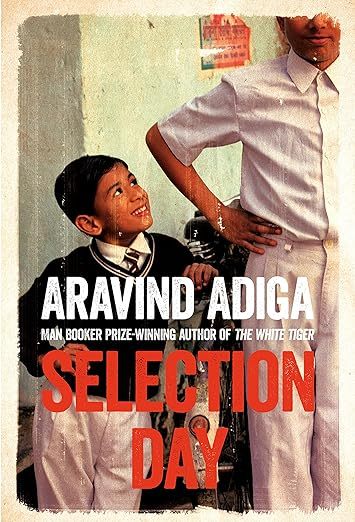
…
SELECTION DAY
&

…
WILFUL BEHAVIOUR
ON KINDLE
*****
FOR BOOK GROUP
THIS MONTH ONE OF OUR READERS HAS NOT READ THIS MONTH’S BOOK BUT HAS READ (OR IS READING)

…
THE LAND OF PAINTED CAVES
‘I have been continuing with Earths Children series and am now on the last one, The Land of the Painted Caves. I love them and have read them before.’
&

…
ALL THE LITTLE LIARS
‘I have read All The Little Liars by Victoria Selman which I thought started slowly then got me hooked. It is about a 13 year old girl and her friend who got 20 years for killing their friend.’
&

…
UNCLE PAUL
‘I am now reading Uncle Paul by Celia Fremlin which is billed as a suspense novel and I am quite enjoying.’
&

…
THE WIND IN THE WILLOWS
’ … started … ‘
…
ANOTHER MEMBER HAS STARTED

…
THE SENTENCE IS DEATH
‘I'm currently reading Anthony Horowitz's 'the Sentence is Death'. The author seems to weave himself into the narrative and set in London - it's fun even if it is a murder story.’
& FINISHED
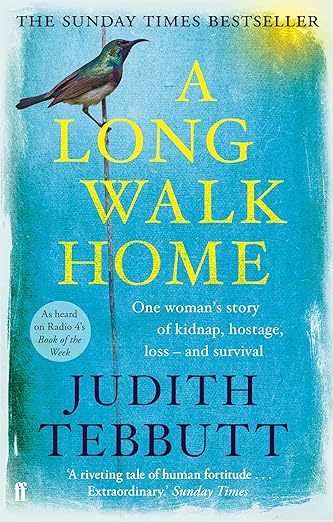
…
A LONG WALK HOME
‘I've read 'A Long Walk Home' by Judith Tebbutt. It is her account of her kidnap from a coastal holiday resort in Kenya in 2012 by Somali pirates. Her imprisonment for 8-9 months and how she coped with this and hearing that her husband had been killed by the pirates. Absolutely gripping and a story of inner strength and resilience.’
WHILST THE OTHER HALF

…
THE INK BLACK HEART
‘ … still ploughing through … !’
…
ANOTHER MEMBER IS FINDING THIS CONFUSING

…
THE LITTLE RED CHAIRS
‘I've nearly finished Edna O'Brien's The Little Red Chairs. I am finding it quite confusing, it's very episodic with a lot of very raw description, but you need to look it up to work out what is going on!’
…
OUR LEADER IS JUGGLING
‘I am reading Milkman by Anna Burns, The Towers of Trebizond by Rose Macauley and All the Light we Cannot See (I have put this on hold temporarily).’

…
MILKMAN
&
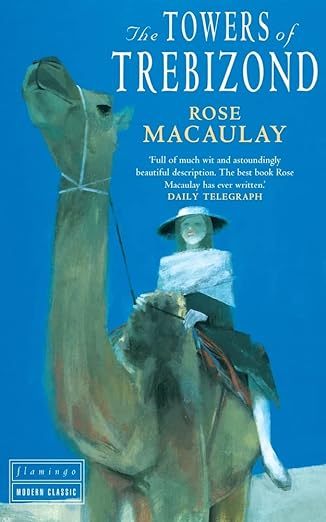
…
THE TOWERS OF TREBIZOND
&
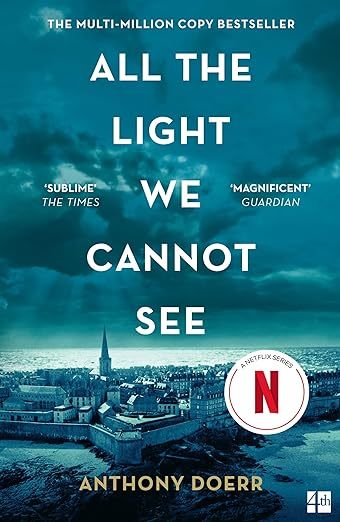
…
ALL THE LIGHT WE CANNOT SEE
*****
BOOK GROUP
*****
QUOTE OF THE WEEK 2011 - 2023
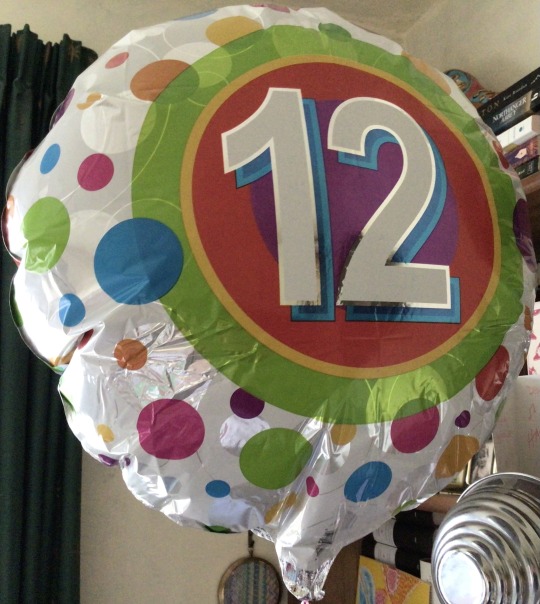
…
12 EPIC YEARS
FROM THE ARCHIVE

…
17/8/20
*****
0 notes
Text
PPD - Interview with Clare Qualmann
This was not part of my PPD Placement, i undertook the interview as a matter of personal interest and to gather material for a publication proposal, though it may also be considered a valuable PPD experience to interview a professional artist. You’ve mentioned in other interviews that your practice emerged from the financial necessity of walking– I am wondering what has sustained your interest in walking as a practice over the years, particularly if it has become a more luxury activity, and why do you think it’s important to keep walking and encouraging others to do so as well?
I’m still quite keen on not spending any money! Although my financial situation has transformed over the last 20 years, old habits die hard. Although the walks at the start of my walking art practice were because I had no money for the bus to get to work, after a while the habit and routine of walking means that even when I had money I would choose to walk. In my life (pre corona) the luxury of walking becomes one of the economies of time – more pressure and responsibility – longer distances and need to be there and back fast.
Walking as a leisure activity – and some very time consuming or remote walks – seem like a very particular luxury. I’m aware of my privilege in having any time at all to walk.
The pace and scale of walking to my mind are ideal for experiencing and connecting with a place. Walking without too strong a purpose (or too much of a need to get somewhere) is great for noticing things that you wouldn’t have seen on a bike or a bus or in a car. Walking also builds connections with people – if you walk around your neighbourhood a lot you will start to see the same people, maybe you’ll start saying hello – maybe you’ll just smile at each other.
How are you adapting your practice during this time of restriction? Are you responding to the crisis in any way within your work and has it changed your perspective on notions of trespassing and freedom of movement?
This particular moment is very much dominated by my family situation – my youngest is 2 and for her to go for a walk is a very slow, very explorative, very sensory experience. Perhaps I can enjoy/appreciate this more in these restricted times than I would normally when I’d be more in a hurry to get places. For example I can spend an hour just walking around the block with her as she climbs on railings and walls, picks leaves, stops and looks at ants, goes up and down steps over and over again. If I go for a walk or a run on my own I’m trying to stay out of the busy parks and have been trying to explore streets that I don’t; know so well – I’ve been enjoying drifting in my neighbourhood and trying to plan/scope out some foraging walks to share remotely. Trying to work out what is allowed and what’s not is hard. It does feel transgressive if I’ve been for a solo walk, and then later int eh day I take the kids out for a run around. I would love to do some longer walks – into the city or to the Thames – but it doesn’t feel possible to leave my family for this purpose (I am leaving them a lot to work at home shut up a way from them) that would really feel like a luxury – to go do a long walk like that now.
Lauren Elkin suggests in her book ‘Flâneuse’ that for women, ‘simply walking out your front door’ remains a transgressive/ subversive act due to histories of restriction and oppression– having addressed gender issues in works like Perambulator, Night Walking and the 2016 Walking Women exhibition, how far would you agree with this in terms of your own work and how central/necessary is the awareness of gender in your day to day practice?
Yes I agree. Although I try to fight it I still regularly get a feeling, or a question inside about whether it’s safe to go out and walk. I’ve lived in the same neighbourhood for a long time, and have never experienced anything violent, which makes me feel safe. But as I walk out the door on my own at night it often crosses my mind. My experience of gender in relation to walking has more dominantly (in the last 8 years) been out having children. Realising that it is predominantly women who are pushing the prams, who are taking leave to look after children, whose mobility has been transformed. I’ve seen people saying that lockdown is a bit like maternity leave!
I recently read of a study that claimed 75% of women in the UK have experienced harassment or violence in public* – as a young woman this is quite frightening to read, and I wonder if you have dealt with similar fears and how you have tackled them in order to walk the city with such confidence.
Yes. I think this is true. I think we grow up normalizing things like street harassment and we have to stop. When I first started working with Gail and Serena (walkwalkwalk) a lot of what we were doing was a push to overcome our fears and make the city that we wanted to walk in safe (by walking with groups) practicing that repeatedly helped us to feel like we had the right to be there, and that victim-blaming rhetoric around staying home needs to stop. There’s a great article by the crime writer Celia Fremlin about night walking and women….
On a practical level, how do you make money as an artist given that much of your work is performative/ community based/ non commercial.
I mostly earn my living from working as an academic – teaching and doing research. As a freelance artist I get commissioned by galleries, museums, other universities to make work/create projects. I (very occasionally) sell prints, drawings and ephemera that are created as part of the performances/live projects.
Do you have a favorite place to walk or any place (physical or otherwise) in particular that you go to find inspiration?
I love to walk the original walkwalkwalk route (my routines don’t take me there very often now) from Bethnal Green to the City (maps on the web site)
* http://www.stopstreetharassment.org/resources/statistics/statistics-academic-studies/
0 notes